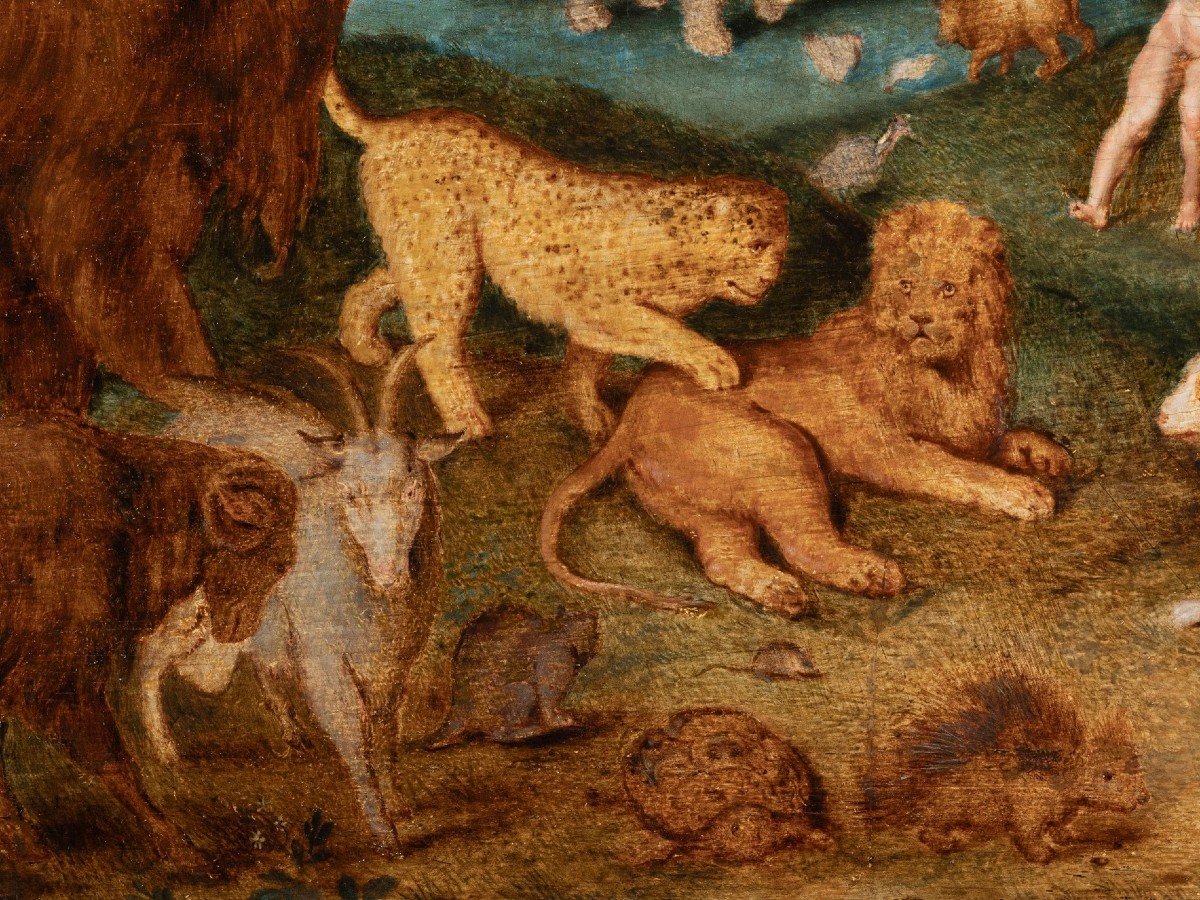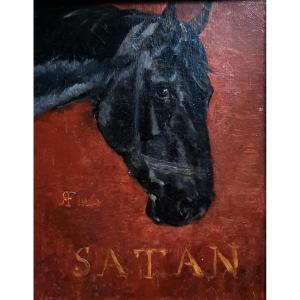17th century Antwerp school
Oil on oak panel, h. 37 cm, w. 49 cm
Tortoiseshell veneered baroque style frame
Framed: h. 52 cm w. 65 cm
Our delightful work depicting Adam and Eve in the lush Garden of Eden relates a scene from the Old Testament, specifically the moment in the Book of Genesis between God's creation of fish, birds, animals, Adam and Eve and the expulsion of the latter two from the Garden of Eden. The work combines two of the pivotal moments of the first book of the Old Testament, the creation of the Universe and the moment before Adam consumed the fruit from the tree of the knowledge of good and evil.
More specifically, the artist seeks to demonstrate how animals and humans lived in harmony before Adam and Eve ate the forbidden fruit.
So in the foreground we discover the animals created by God, who coexist in peace and harmony, unconscious of the imminent end of Paradise. Pets such as dogs, rabbits, foxes, deer, goats, sheep, ox, horses; and almost as many exotic animals: camel, lion, leopard, elephant, turtle, porcupine. Let us recall some symbols: the sheep and the deer are associated with Christ, as well as the ox with the Nativity, the leopard with concupiscence, the rabbit with the act of the flesh, the goat with the Christian faithful, the porcupine with courage, the lion to strength and royalty, the turtle to patience.
In the center of the composition in the background, against a background of a blue sky, stands the tree of Good and Evil with multiple branches and branches, all loaded with fruit. We see the snake wrapped around its trunk. Under the tree, Eve offers the apple to Adam. Standing Eve appears to tower over Adam sitting on the ground, as he extends his hand to take the fruit in a gesture of passive acceptance.
Through this curious positioning in the background of the first human couple and the act of sin, the artist seeks to demonstrate how an apparently innocuous act will have profound upheavals in the world.
Our work is a studio version of Jan Brueghel the Younger of identical dimensions of the painting currently kept at the Prado Museum in Madrid.
Related work:
Jan Brueghel the Younger, dated 1618, Prado Museum, Madrid, (inv. P001408), h. 40 cm, width. 50 cm, oil on panel
The setting of an increasingly exotic terrestrial paradise is used by the artist to illustrate animal representations. At the end of the 16th and 17th centuries, this new genre became a specialty of Flemish painters (especially Roelandt Savery, who had studied exotic animals at the court of Rudolph II, and Jan Brueghel).




























 Le Magazine de PROANTIC
Le Magazine de PROANTIC TRÉSORS Magazine
TRÉSORS Magazine Rivista Artiquariato
Rivista Artiquariato
